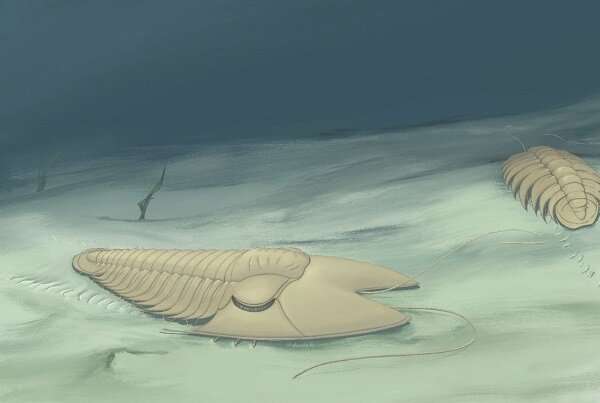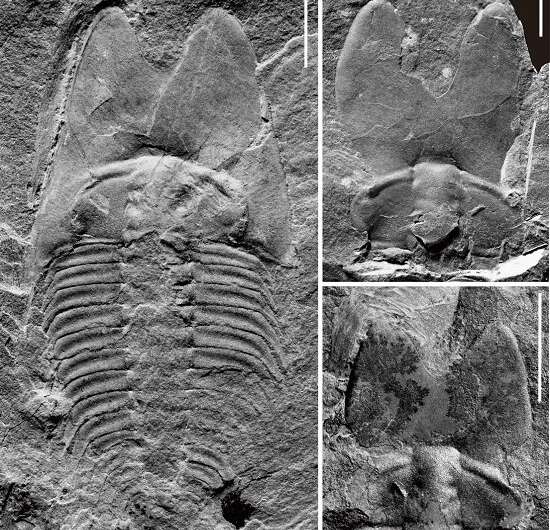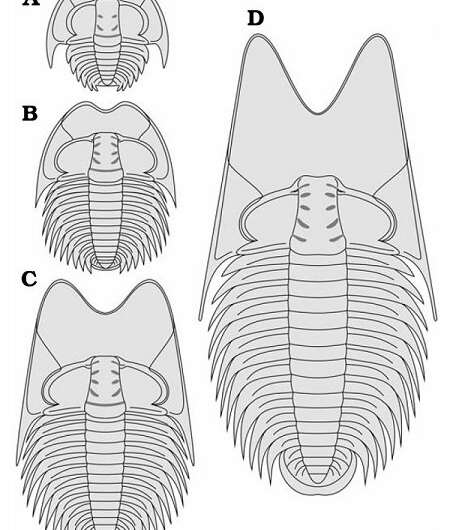New trilobite fossil reveals cephalic specialization of trilobites in Middle Cambrian

Trilobites achieved their maximum genetic diversity in the Cambrian. However, unlike this diversity measure, the morphological disparity of trilobites based on cranidial outline reached the peak in the Middle to Late Ordovician.
Early to middle Cambrian trilobites with a specialized cephalon are rare, especially among the ptychoparioids. Even with a few exceptions, ptychoparioids exhibit a monotonous pattern of head specialization, characterized by additional cephalic border spines.
Recently, led by Prof. Zhao Fangchen, postgraduate Sun Zhixin and Dr. Zeng Han from the Nanjing Institute of Geology and Paleontology of the Chinese Academy of Sciences (NIGPAS) described a ptychopariid trilobite with an unusual cephalic morphology named Phantaspis auritus gen. et sp. nov. from the middle Cambrian Mantou Formation in Shandong Province, North China.
This unique trilobite provides new insights into the morphological range and structural foundation of the cephalic specialization in Cambrian trilobites. The study was published in Acta Palaeontologica Polonica.
Phantaspis is characterized by a cephalon with an extended anterior area of double-lobate shape resembling a pair of rabbit ears in later ontogenetic stages, which represents a form of specialization in a Cambrian trilobite that was not repeated in any younger trilobites. This illustrates the diversity of Cambrian trilobites in morphotypes and provides an example of ptychoparioid cranidial outline variation during the middle Cambrian caused by specialization.

The extended cephalon of Phantaspis is reminiscent of certain sediment feeders with a specialized cephalon, for example species of Harpina and Trinucleidae. However, in Phantaspis the anterior border was not thickened as those of the above groups. Other than adaptation to a particular life habit, further possibilities should be considered.

The cephalicshape seen in Phantaspis may have reduced the risk of predation by increasing their effective size, thus making it harder for predators to eat them, similar to other trilobites.
In addition, the development and stabilization of cranidial morphology associated with sexual maturity suggest a possibility of sexual selection, similar to 'beetle'-like horns known from other trilobites, which are assumed to reflect this type of selective strategy.
More information: Sun et al., A new middle Cambrian trilobite with a specialized cephalon from Shandong Province, North China. Acta Palaeontologica Polonica(2020). DOI: 10.4202/app.00753.2020
Journal information: Acta Palaeontologica Polonica
Provided by Chinese Academy of Sciences





















